Ovatipsa chinensis (Gmelin, 1791)
Chinese
cowry, 23-46mm
In the Marshalls, Ovatipsa
chinensis lives primarily in two separate habitats. Although always moderately
rare, they seem most common under rocks on the intertidal reef. At Kwajalein,
the best place to look always used to be the reef between Kwajalein and Little
Bustard, a bit toward the lagoon from a straight line between the two islands.
There they lived under flat, loose rocks. In recent years, however, live branching
coral covered much of this area, hiding the rocks these cowries used to be found
beneath. Then after 2009 a series of episodes of severe coral bleaching coupled
with some El Niño related extreme low tides killed the coral, forming
a flat, cement-like pavement. These cowries and other species may well live
in the honeycombed holes in this hard pavement, but they do not come out, and
it would probably take explosives to break up the solid substrate enough to
be sure. The other primary habitat is on the atoll’s leeward seaward reef,
where they can sometimes be found underneath rocks that collect in potholes
or depressions in the reef flat at depths of about 5-7m. Rarely they can also
be found under rocks or exposed at night on the seaward reef dropoff to depths
of about 25m. At night the bright orange red mantle makes this animal a striking
sight. This is a fairly variable species throughout its wide Indo-Pacific ranges.
The subspecies found in the Marshalls is Ovatipsa chinensis chinensis.
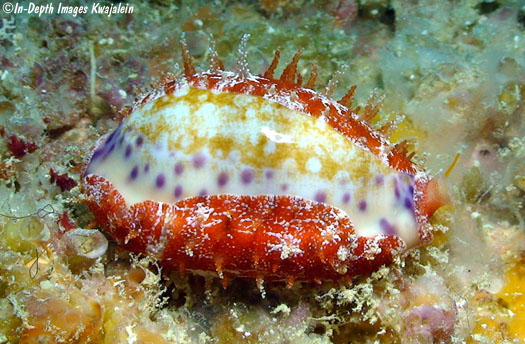
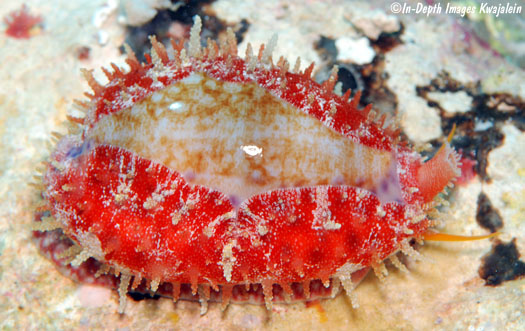
The next two shots show a specimen
with its egg mass.
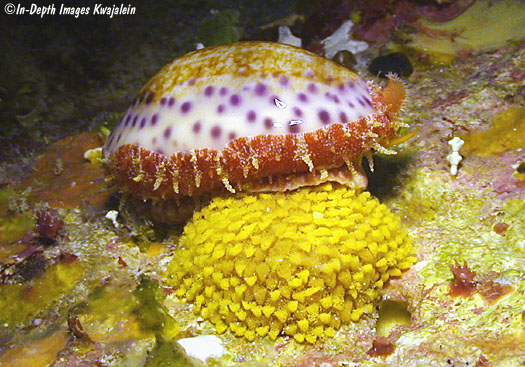
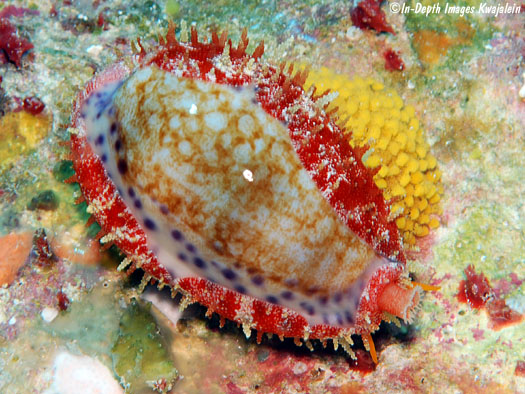
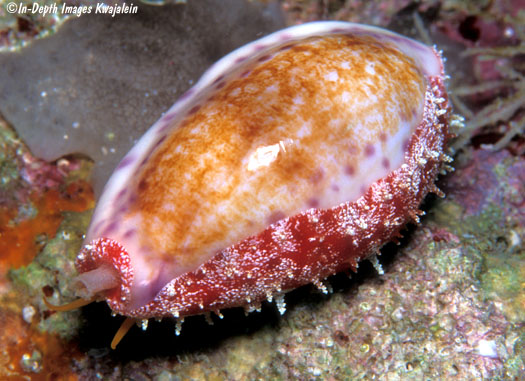
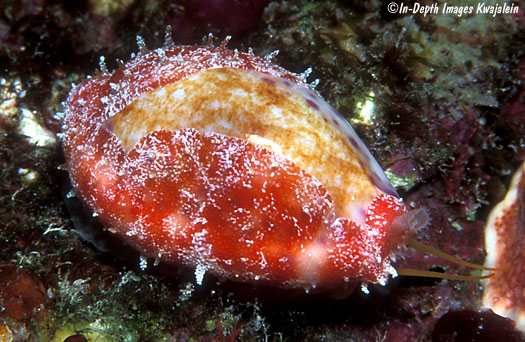
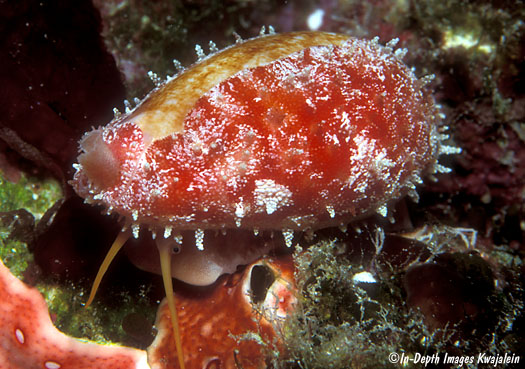
Normally rather uncommon, four
specimens were spotted on a shallow seaward reef dive on 21 August 2010. Three
were together under a rock and one more was spotted on an egg mass not far away.
August may be the season for breeding in the Marshalls.
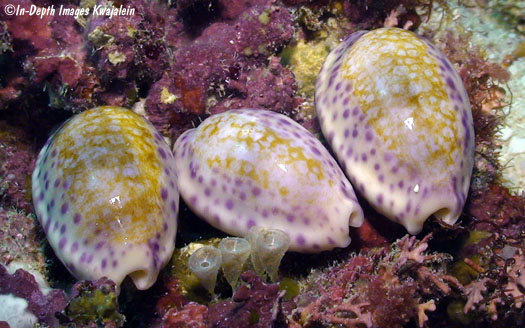
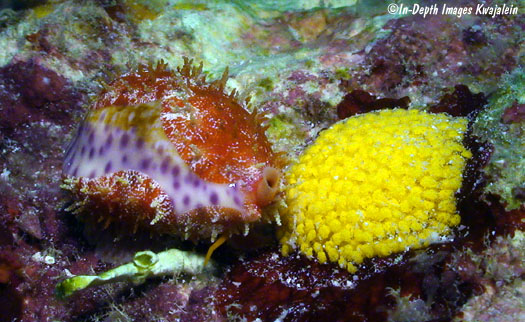
33.15mm, 2 September 2008
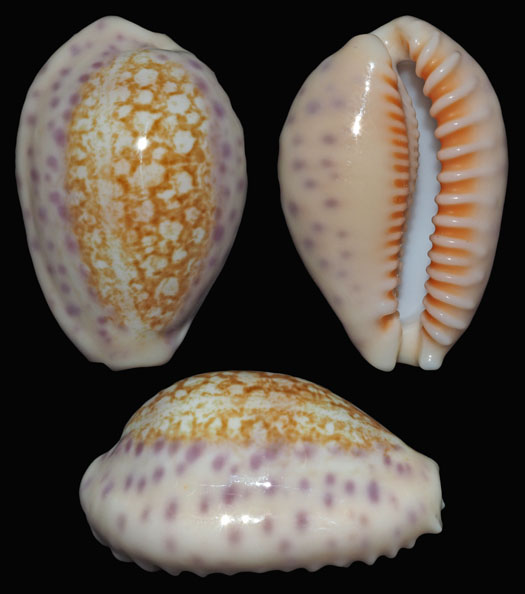
23.25mm
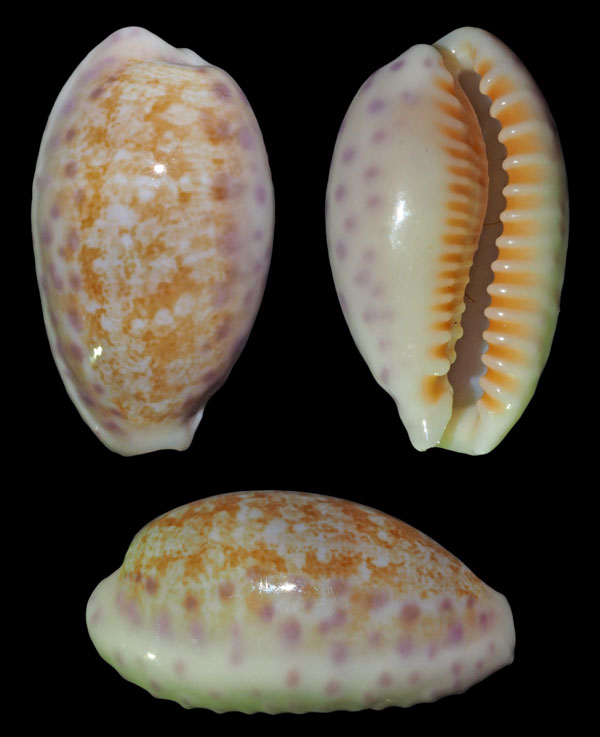
39.65mm, 17 August 2014
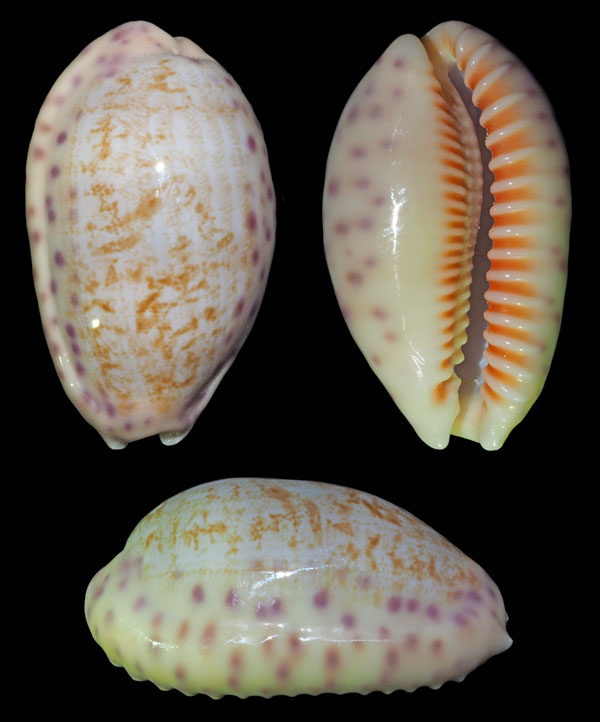
Created
23 September 2008
Updated 3 April 2024
Back to
cowries
Kwajalein Underwater Home












